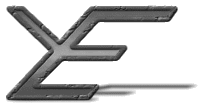The user interface is the interface that people see and interact with. The ideal user interface is one that does not get in the way of the user using it. The user understands it intuitively, so that the user interface allows work to be done, without intruding on the user's experience of the site.
The main objectives for the user interface are to translate the requests from the user into requests for the "middle interface" (which is located between the user interface and the server interface, and acts as a middleman between them), and to return results from the middle interface to the user.
The Web user interface (as shown in Figure 5: The Web Interface servlets) has three main components. Those components are the read servlet, the browse servlet and the edit servlet, along with a couple of support servlets that are not directly required for using the engine (such as the user preference servlet and the survey servlet).

Figure 5: The Web Interface servlets
The Web user interface has been designed to interact over the Web, and works in conjunction with a web server to interface to the user's web browser. This allows access to the engine from any system that supports a web browser. The user interface talks with the web server using the CGI (http://www.w3.org/CGI/) protocol, which defines the interactions between the web server and the web server application. There is a servlet API that abstracts some of the CGI protocol, which makes the interaction easier, but it is still based on the CGI protocol, so knowledge of it is required for the creation of Java Servlets.
In the future, there can be other user interfaces to interact with via means other than the Web. For example there may be direct links into applications, such as word processors, integration into mobile computing, such as Palms and web enabled phones, or direct links to other types of application.
| Previous: | 4.05 Design of the engine |
| Next: | 4.07 UI: Read servlet |
